Kanani & Darin
Things To Do
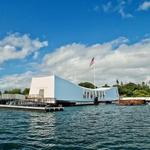
Pearl Harbor
Pearl Harbor National Memorial Made up of several historic sites and memorials, Pearl Harbor honors and educates the public about the Japanese attack on the United States on December 7, 1941 that propelled the country into World War II. It’s one of Hawaii’s most-visited attractions, and one of the country’s most significant WWII memorial sites.
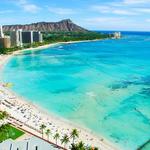
Waikiki
Waikiki, where most Hawaii vacations get their start, is everything at once: white sandy beaches, swaying palms, high-rise accommodations, world-class shopping, top-notch and seaside dining, local culture, and excellent surfing. It’s no wonder this former playground for Hawaiian royalty continues to be an oasis for global visitors.
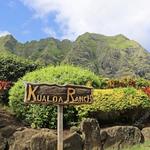
Kualoa Ranch
Kualoa Ranch is a one-stop adventure playground and a highlight for many travelers to Oahu. Stretching from the verdant folds of the Koolau Mountains to the tropical sea, the 4,000-acre (1,619-hectare) working cattle ranch is one of the largest tracts of accessible nature on Oahu and offers visitors a huge variety of ways to interact with Hawaii’s stunning landscapes, from ATV rides and zipline adventures to film site tours. The property is divided into two areas: the northerly Kaaawa Valley with its many movie locations, and Hakipuu Valley, fronted by an 800-year-old Hawaiian fishpond and the site’s Secret Island Beach.
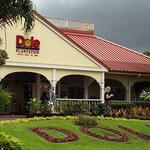
Dole Plantation
Dole Plantation What started out as a Wahiawa fruit stand in the middle of the pineapple fields in 1950 is now an extremely popular Hawaiian attraction. The sprawling Dole Plantation in central Oahu is a rural throwback to a time when the pineapple helped rule Oahu’s economy. Visitors can sample the sweet yellow fruit, ride on the famous Pineapple Express train and motor out through the fields, take a walk through a huge garden maze, learn how to find fresh pineapple when grocery shopping, and hear how pineapples are grown on plants—and not underground or on trees.
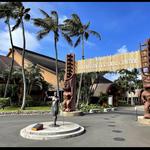
Polynesian Cultural Center
Polynesian Cultural Center Although never a recognized country, Polynesia was once considered the largest nation on Earth, with the island nations in the Polynesian Triangle all tracing their roots to the same ancestral homeland and connected by language and lore. You can experience many of these cultures at the famous Polynesian Cultural Center, set on the North Shore of Oahu. Explore some of the eight island village exhibitions; discover Maori facial tattoos, experience the “ha,” or breath of life, and how it helps connect all cultures across the Polynesian chain; enjoy a canoe tour; and stay for an evening luau.
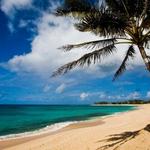
North Shore
Oahu North Shore Surfing is king on Oahu’s North Shore, where summer’s placid snorkeling spots are transformed into pounding 40-foot (12-meter) waves come winter. On land you’ll find a peaceful respite from hectic Honolulu, with scenic waterfall hikes, sleepy farms selling tropical fruit, and food trucks doling out garlic shrimp.
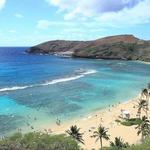
Hanauma Bay
Hanauma Bay Circular Hanauma Bay is a particularly attractive, sheltered inlet of turquoise water, carved from a submerged volcanic crater east of Diamond Head. The sandy beach park is popular with families, with its calm waters, lifeguards, and gentle diving and snorkeling. Picnic tables overlook the bay, and you can rent diving equipment. The area is a Nature Preserve and Marine Life Conservation District, and when you visit there’s a short film to watch about the marine life before you head down to the beach. While diving you should spot green turtles, parrotfish and coral.
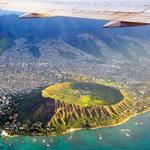
Diamond Head
Diamond Head Arguably Hawaii's most well-known sight, Diamond Head Crater is more than just a famous Waikiki backdrop but also an entire attraction unto itself, featuring one of Oahu's best hikes for a panoramic view. From atop the 760-foot (231-meter) summit, visitors can gaze out from Koko Head Crater to the Honolulu skyline and down on Waikiki Beach, where surfers, paddlers, sailboats, and canoes all splash through the tropical waters.
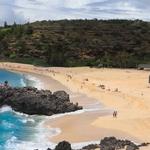
Waimea Bay
Waimea Bay Welcome to one of the most iconic places on O’ahu Island! Combining popular culture, history and extreme sports, Waimea Bay simply does not disappoint. Its stunning panoramas alone, as seen from the Kamehameha Highway, are sufficient reason to visit the island’s northern end! The area’s international reputation emerged in 1779, when famous Captain James Cook was killed by native villagers after he tried to make the King of Hawaii captive. Staples of this period are still visible today at the Pu'u o Mahuka Heiau State Monument, the largest of its kind on the island.Many years later, Waimea Bay beach once again gained popularity by becoming the top surfing destination in the world and officially starting the 1950s now-iconic surf phenomenon (as demonstrated by the Beach Boys’ famous song!).